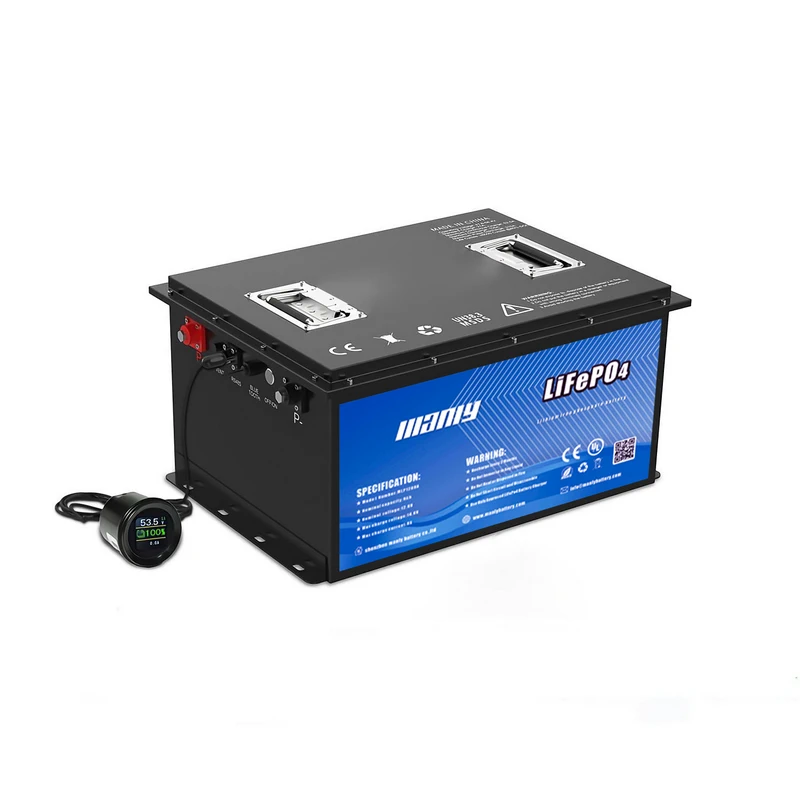2024 How Many Batteries in a Golf Cart
Table of Contents
- 2024 How Many Batteries in a Golf Cart
Golf carts, powered by batteries that vary in number depending on the type of cart and the voltage required, are fascinating pieces of machinery. Whether you have an older 36-volt model or a newer 48-volt one, understanding the configuration of your golf cart battery system is crucial. It also empowers you to optimize performance, lifespan, and maintenance.
What Kind of Batteries Do Golf Carts Use
Electric golf carts rely on rechargeable golf cart battery types designed to provide steady power over long periods. The primary battery types used in golf carts are lead-acid and lithium-ion batteries. Let’s take a closer look at each type and how they impact the performance of your golf cart.
Overview of the Common Golf Cart Battery Types
Several golf cart battery types are commonly used in electric golf carts. The most widely used are deep cycle golf cart batteries, built to endure frequent charging and discharging cycles. These batteries are designed for long-term use, providing steady power over extended periods, making them ideal for applications like golf carts.
Flooded Lead Acid Batteries
These traditional flooded lead-acid batteries have been a staple in the golf cart industry for years, and for good reason. They are not just affordable, but also reliable, requiring regular maintenance, including checking water levels and cleaning terminals to prevent corrosion. Despite the extra care needed, many golf cart owners still choose lead-acid batteries due to their proven track record and low cost, providing a sense of security and confidence in their choice.
AGM Battery for Golf Cart
Absorbent Glass Mat (AGM) batteries are sealed lead-acid batteries that don’t require the same level of maintenance as flooded types. They are engineered to be spill-proof and boast a longer lifespan than conventional lead-acid batteries. They are often utilized in environments where the battery is likely to be exposed to extreme conditions. While the AGM battery for a golf cart is more expensive than its flooded counterpart, it offers enhanced durability.
Lithium Battery for Golf Cart
One of the newer options available for golf carts is the lithium battery for golf cart. Lithium batteries have gained popularity because they are lighter, require less maintenance, and last longer than lead-acid alternatives. They also provide a more consistent power level and faster recharge time. Despite the higher upfront cost, many golf cart owners find lithium batteries’ benefits worth the investment, sparking excitement about the potential upgrade.
Explanation of Deep Cycle Golf Cart Batteries and Their Importance
Deep cycle golf cart batteries are the most common power source for electric golf carts. Deep cycle batteries are engineered to efficiently discharge a large portion of their capacity before needing to be recharged. This distinguishes them from starter batteries, engineered to provide brief bursts of high power. This makes them ideal for golf carts requiring a steady power supply over extended periods. The durability of these batteries also ensures they can withstand hundreds of charge cycles, giving them a long lifespan.
Understanding the type and configuration of your deep cycle golf cart batteries is crucial for maintaining your golf cart’s performance. Whether you’re using a lead-acid or lithium battery for golf cart, choosing a battery that fits your cart’s power demands and budget is critical.
How Many Batteries in a 36 Volt Golf Cart
For those with a 36-volt golf cart, understanding the golf cart battery configuration is essential to keeping your vehicle running smoothly. A typical 36-volt system requires six batteries, each with a voltage of 6 volts. The batteries are connected in series to produce the cumulative voltage required to supply power to the cart.
Understanding the Golf Cart Battery Configuration for a 36-Volt System
A 36-volt golf cart typically uses a system of six 6-volt batteries. In a series connection, the positive terminal of one battery is connected to the negative terminal of the next, and so on, until the total voltage reaches 36 volts. This configuration is typical in older golf carts and smaller models requiring less power. While this setup provides adequate power for short distances or flat terrains, newer models often offer more powerful systems.
The number of batteries needed in a 36-volt golf cart can impact its performance, lifespan, and even how long it can go between charges. Understanding the specific golf cart battery configuration helps ensure your cart performs at its best.
Common 8 Volt Battery Golf Cart Setups for 36-Volt Carts
While the standard configuration for a 36-volt cart involves six 6-volt batteries, some setups use 8 volt battery golf cart configurations. In this scenario, you may find fewer batteries, such as four 8-volt batteries connected in series to achieve the same total voltage. This can save space in the golf cart battery compartment and reduce overall weight, improving performance and easier maintenance. However, 8 volt battery golf cart setups sometimes have less capacity than their 6-volt counterparts.
The choice between a 6-volt or 8-volt battery setup depends largely on your golf cart’s specific needs, as well as the terrain and distance it’s used for. Both options can provide reliable power, but owners should consider their individual needs when choosing a battery configuration.
How Many Batteries Does a 48 Volt Golf Cart Have
Moving on to 48-volt systems are typically found in newer and more powerful golf carts. The number of batteries in a 48-volt golf cart can vary depending on the battery type and configuration, but most commonly, these carts use either six 8-volt batteries or eight 6-volt batteries.
Explanation of the Golf Cart Battery Configuration for a 48-Volt System
A 48-volt system offers more power and efficiency than the older 36-volt setup. There are two standard configurations for a 48-volt system:
Six 8-Volt Batteries
In this configuration, six 8-volt battery golf cart units are connected in series to achieve 48 volts. This setup is often preferred for its space-saving design and relatively low weight compared to other configurations. It provides enough power for most golf carts and is ideal for hilly terrain or long distances.
Eight 6-Volt Batteries
Alternatively, some 48-volt golf carts use eight 6-volt batteries. This configuration offers more overall energy storage capacity, which can extend the golf cart’s range before it needs to be recharged. However, it also adds more weight and space in the golf cart battery compartment, which could slightly affect performance.
Battery Storage and Space Planning for Golf Carts
When selecting batteries for your golf cart, it’s essential to consider the available space in the golf cart battery compartment. Different battery types and configurations can impact how much room you have, which may influence your choice between lead-acid and lithium batteries. Proper space planning ensures your cart functions efficiently and makes maintenance easier.
Considerations for Fitting Batteries into the Golf Cart Battery Compartment
The size and design of the golf cart battery compartment play a significant role in determining the number and type of batteries your golf cart can accommodate. For example, lead-acid batteries are bulkier and require more space, not only for the batteries but also for proper ventilation. Lead-acid batteries can release gases during operation, so adequate ventilation is essential to prevent overheating and prolong the life of the batteries.
On the other hand, lithium batteries are much smaller and lighter, which gives them a significant advantage in space planning. A lithium battery for golf cart will typically take up less space in the compartment, allowing for better airflow and easier access for maintenance. This weight reduction can also improve your cart’s performance, increasing speed and driving range.
Impact of Different Battery Types on Available Space
As mentioned, the choice between lead-acid and lithium battery for golf cart can drastically affect the available space within your cart. Lead-acid batteries, while affordable, are heavy and require more room. Additionally, they need regular maintenance such as topping off water levels, so having easy access to them within the golf cart battery compartment is crucial.
In contrast, lithium batteries for golf carts are more compact and require minimal maintenance, making them a popular choice for modern golf carts. Because they take up less space, owners have more flexibility in their battery setup. They may even add extra batteries for extended range without worrying about overloading the cart or sacrificing performance.
Planning your golf cart battery configuration carefully ensures you get the best performance and lifespan out of your batteries while keeping your golf cart’s space usage efficient.
Benefits of Installing Lithium Batteries in Golf Carts
Switching from lead-acid to lithium batteries for golf carts has become an increasingly popular choice among owners. While lithium batteries are more expensive upfront, they offer several advantages that make them an attractive option for those looking for better performance, a longer lifespan, and easier maintenance.
Advantages of Upgrading to Lithium Battery for Golf Cart
There are several benefits to installing lithium batteries in golf cart systems, including:
Longer Lifespan
Lithium batteries last significantly longer than lead-acid batteries. While a typical lead-acid battery may need to be replaced every 4-6 years, a lithium battery for golf cart can last up to 10 years or more. This longer lifespan reduces the long-term costs associated with replacing batteries frequently.
Lightweight Design
Lithium batteries are much lighter than their lead-acid counterparts. This weight reduction not only improves the golf cart’s overall performance but also allows for better acceleration and increased range. The lighter weight also puts less strain on the cart’s components, potentially extending the life of the tires and suspension.
Lower Maintenance Requirements
One of the most significant advantages of installing lithium batteries in golf cart systems is that they require little maintenance. Lithium batteries are virtually maintenance-free, unlike lead-acid batteries, which need regular water checks and cleaning. This makes them a convenient option for golf cart owners who want to reduce the time and effort spent on upkeep.
Faster Charging and Consistent Power Output
Another significant benefit of lithium batteries for golf cart systems is their faster charging time. Lithium batteries can charge much more quickly than lead-acid batteries, meaning less downtime and more time on the course. Additionally, they provide consistent power output, meaning the cart’s performance remains steady even as the battery charge decreases.
Conclusion
Understanding the battery configuration and the number of batteries required for your golf cart is essential for ensuring optimal performance. Whether you have a 36-volt or 48-volt system, the proper golf cart battery configuration can significantly affect how well your cart operates, how long it lasts between charges, and how much maintenance is required.
The standard setup for a 36-volt golf cart involves six 6-volt batteries, while a 48-volt golf cart may use either six 8-volt batteries or eight 6-volt batteries. Depending on the specific needs of the cart and its owner, each configuration offers its own set of advantages, from increased range to improved power output.
Also, choosing lead-acid and lithium batteries for golf cart systems is essential. While lead-acid batteries remain popular due to their lower cost, they require more maintenance and have a shorter lifespan. On the other hand, installing lithium batteries in golf cart systems offers several benefits, including longer battery life, faster charging, less maintenance, and improved overall performance.
When considering a golf cart battery upgrade, it’s crucial to consider your cart’s specific requirements, the terrain you drive on, and how often you use it. If you’re looking for a long-lasting, maintenance-free solution, switching to lithium batteries for golf cart systems may be the best choice.
Selecting the suitable golf cart battery types and configurations ensures your cart runs smoothly and efficiently. With suitable batteries, your golf cart can provide reliable service for years, allowing you to enjoy a smoother and more powerful ride.






